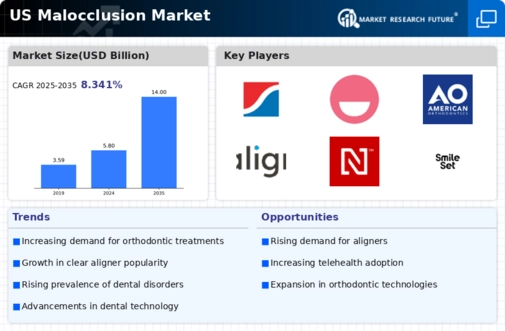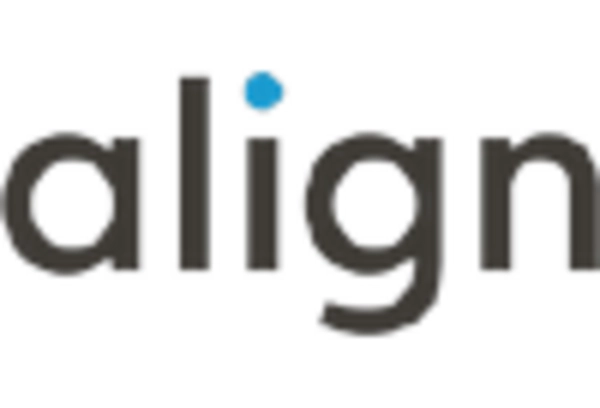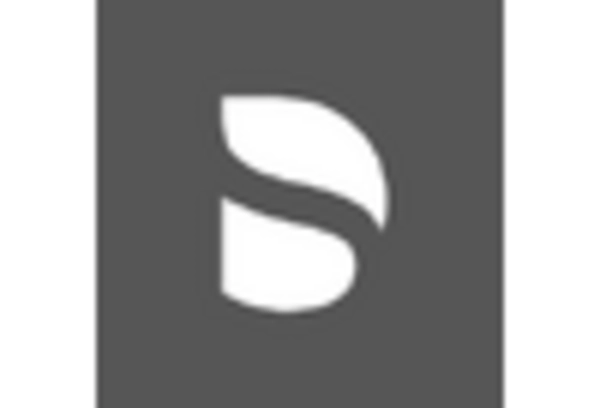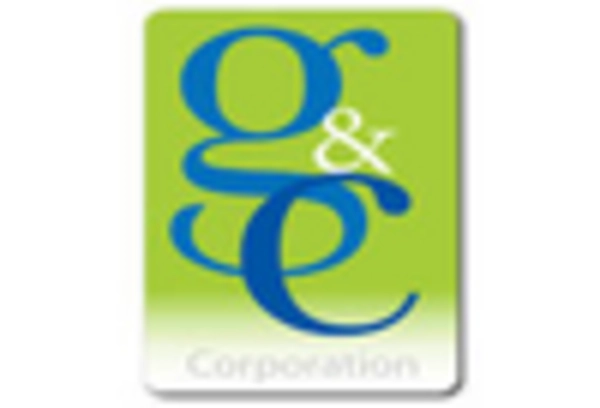Rising Incidence of Malocclusion
The prevalence of malocclusion in the US population serves as a significant driver for the malocclusion market. Studies suggest that nearly 30% of children and adolescents exhibit some form of malocclusion, necessitating orthodontic intervention. This high incidence rate indicates a substantial potential customer base for orthodontic services. Furthermore, as the population ages, the need for corrective treatments may increase, particularly among adults who may have previously avoided orthodontic care. The malocclusion market is likely to benefit from this demographic shift, as more individuals seek solutions to improve their dental alignment and overall oral health.
Growing Interest in Preventive Care
The trend towards preventive care in dentistry is influencing the malocclusion market positively. Patients are increasingly recognizing the value of early intervention in orthodontics, which can prevent more severe malocclusion issues later in life. This shift in mindset is leading to a rise in orthodontic evaluations for children at younger ages, often before the onset of significant dental problems. In the US, it is estimated that about 50% of children receive orthodontic assessments by age 7, which is likely to contribute to a growing demand for early treatment options. As preventive care becomes more mainstream, the malocclusion market is expected to expand, catering to a younger demographic seeking timely orthodontic solutions.
Increasing Awareness of Oral Health
The rising awareness of oral health among the population is a crucial driver for the malocclusion market. Educational campaigns and initiatives by dental associations have highlighted the importance of addressing malocclusion issues. As individuals become more informed about the potential consequences of untreated malocclusion, such as difficulties in chewing and increased risk of dental decay, the demand for orthodontic treatments is likely to rise. In the US, surveys indicate that approximately 70% of adults recognize the importance of orthodontic care, which could translate into a significant increase in market growth. This heightened awareness is expected to propel the malocclusion market forward, as more individuals seek professional evaluations and treatments to correct their dental misalignments.
Increased Accessibility to Orthodontic Care
The expansion of orthodontic services and the increasing number of practitioners in the US are contributing to the growth of the malocclusion market. With more dental professionals offering specialized orthodontic treatments, patients have greater access to care. Additionally, the rise of teledentistry has made consultations and follow-ups more convenient, allowing patients to receive care from the comfort of their homes. This accessibility is particularly beneficial for individuals in rural areas who may have previously faced challenges in obtaining orthodontic services. As access to care improves, it is anticipated that more individuals will seek treatment for malocclusion, further driving market growth.
Technological Innovations in Treatment Options
Technological advancements in orthodontic treatments are transforming the malocclusion market. Innovations such as 3D imaging, clear aligners, and digital treatment planning have made orthodontic procedures more efficient and less invasive. These technologies not only enhance patient comfort but also improve treatment outcomes, making orthodontic care more appealing to a broader audience. In the US, the market for clear aligners alone is projected to reach $3 billion by 2026, reflecting the growing preference for discreet treatment options. As these technologies continue to evolve, they are expected to drive further growth in the malocclusion market, attracting both new patients and retaining existing ones.

















Leave a Comment